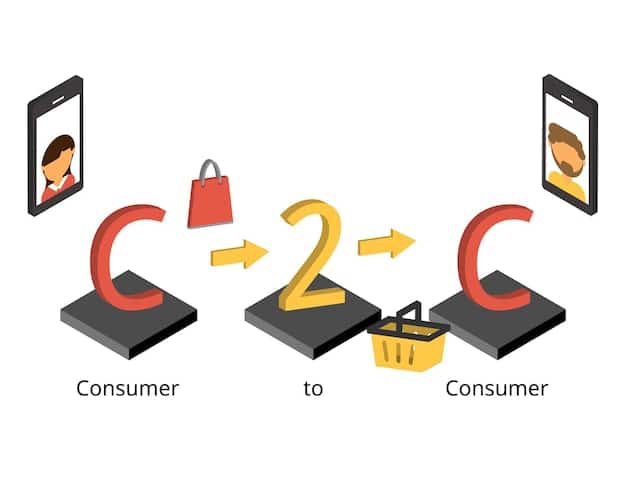Maximize US E-commerce Sales with Mobile Optimization

E-commerce Platform Mobile Optimization: Reach More US Customers on Their Smartphones by ensuring a seamless shopping experience on mobile devices. Optimize your e-commerce platform for mobile to increase conversions and customer satisfaction in the US market.
In today’s digital landscape, E-commerce Platform Mobile Optimization: Reach More US Customers on Their Smartphones is not just an option, but a necessity. With the majority of online shoppers using their smartphones, businesses need to ensure their e-commerce platforms are fully optimized for mobile devices to capture a larger share of the US market. Is your e-commerce site mobile-friendly? Is it performing as well as it could be? If not, you might be missing out on significant revenue.
Understanding the Importance of Mobile Optimization for US E-commerce
Mobile optimization is crucial for any e-commerce platform targeting US customers. A mobile-friendly site not only enhances user experience but also significantly impacts search engine rankings and conversion rates. Let’s delve into why E-commerce Platform Mobile Optimization: Reach More US Customers on Their Smartphones is vital for success.
The Rise of Mobile Shopping in the US
Mobile commerce has been steadily increasing in popularity in the US, with more consumers preferring the convenience of shopping on their smartphones. Ignoring mobile optimization means missing out on a huge chunk of potential sales. Here are some insights:
- The prevalence of smartphones has made mobile shopping more accessible than ever before.
- Mobile-optimized sites provide a smoother, faster, and more intuitive shopping experience.
- Many consumers use their smartphones for product research, even if they plan to purchase on desktop.
The shift towards mobile shopping underscores the urgency of E-commerce Platform Mobile Optimization: Reach More US Customers on Their Smartphones.
Impact on Search Engine Rankings
Search engines like Google prioritize mobile-friendly websites in their search results. A non-optimized site can rank lower, resulting in less visibility and fewer potential customers. Here’s how mobile optimization affects SEO:
- Google’s mobile-first indexing means the mobile version of your site is used for indexing and ranking.
- Mobile-friendly sites typically have faster loading times, which is a ranking factor.
- A positive mobile experience leads to lower bounce rates and higher dwell times, boosting SEO.
In conclusion, optimizing for mobile is essential not just for user experience but also for search engine visibility. Ignoring E-commerce Platform Mobile Optimization: Reach More US Customers on Their Smartphones can negatively affect your SEO efforts.

By prioritizing mobile optimization, businesses can improve their search engine rankings and attract more US customers.
Key Elements of E-commerce Platform Mobile Optimization
Optimizing your e-commerce platform for mobile involves several key elements that collectively create a better user experience and drive conversions. Understanding these elements is critical for E-commerce Platform Mobile Optimization: Reach More US Customers on Their Smartphones.
Responsive Design and Mobile-First Approach
Responsive design ensures your website adapts to different screen sizes and devices. Adopting a mobile-first approach means designing primarily for mobile devices and then scaling up for larger screens. Here’s why it’s important:
- Responsive design provides a consistent look and feel across all devices.
- Mobile-first design prioritizes the mobile user experience, which is essential for capturing mobile shoppers.
- This approach streamlines development and reduces the risk of neglecting mobile users.
Responsive design and a mobile-first approach are cornerstones of E-commerce Platform Mobile Optimization: Reach More US Customers on Their Smartphones. They provide a frictionless shopping experience, preventing potential customers from abandoning their purchases due to poor usability.
Optimized Images and Videos
Large, unoptimized images and videos can slow down your site’s loading time, especially on mobile devices. Optimizing these elements is crucial for maintaining a fast and responsive site. Consider these points:
- Compress images to reduce file size without sacrificing quality.
- Use appropriate file formats (e.g., JPEG for photos, SVG for logos).
- Enable lazy loading so images and videos only load when they are visible in the viewport.
Optimizing images and videos is a key aspect of E-commerce Platform Mobile Optimization: Reach More US Customers on Their Smartphones. Faster loading times improve user experience and contribute to better search engine rankings.
Simplified Navigation and Checkout Process
A simplified navigation and checkout process can significantly reduce cart abandonment rates. Mobile users often have shorter attention spans, so it’s vital to make the shopping journey as easy as possible. Here are some tips:
- Use a clear and intuitive menu structure.
- Minimize the number of steps required to complete a purchase.
- Offer guest checkout options to reduce friction.
A seamless checkout experience is essential for E-commerce Platform Mobile Optimization: Reach More US Customers on Their Smartphones. By simplifying navigation and the checkout process, you make it easier for customers to complete their purchases on mobile devices.
By implementing these key elements, e-commerce platforms can provide an exceptional mobile shopping experience that attracts and retains US customers.
Enhancing User Experience on Mobile E-commerce Platforms
User experience (UX) is a crucial factor in the success of any e-commerce platform, especially on mobile devices. A positive UX can lead to increased customer satisfaction, higher conversion rates, and improved brand loyalty. Let’s examine how to enhance UX through E-commerce Platform Mobile Optimization: Reach More US Customers on Their Smartphones.
Fast Loading Times
Mobile users expect fast loading times, and a slow site can quickly lead to frustration and abandonment. Optimizing your site’s speed is a critical component of UX. Consider these steps:
- Use a content delivery network (CDN) to distribute your site’s content across multiple servers.
- Minimize HTTP requests by combining CSS and JavaScript files.
- Leverage browser caching to store frequently accessed resources locally.
Ensuring fast loading times is vital for E-commerce Platform Mobile Optimization: Reach More US Customers on Their Smartphones. A fast and responsive site keeps users engaged and reduces bounce rates, improving overall UX.
Mobile-Friendly Forms and Data Entry
Filling out forms on mobile devices can be cumbersome. Streamlining the form-filling process can significantly improve UX. Here’s how:
- Use appropriate input types (e.g., number for phone numbers, email for email addresses).
- Implement auto-fill functionality to pre-populate form fields.
- Provide clear error messages and real-time validation to guide users.
Mobile-friendly forms and data entry are essential for E-commerce Platform Mobile Optimization: Reach More US Customers on Their Smartphones. Streamlining this process reduces friction and makes it easier for customers to complete their purchases.

Easy-to-Use Search Functionality
An effective search function is crucial for helping mobile users find what they’re looking for quickly. Here are some best practices:
- Implement auto-suggest functionality to provide search suggestions as users type.
- Use natural language processing (NLP) to understand user intent and provide relevant results.
- Allow users to filter and sort search results to refine their search.
Easy-to-use search functionality is a key element of E-commerce Platform Mobile Optimization: Reach More US Customers on Their Smartphones. It enables users to find products quickly, improving their overall shopping experience.
By focusing on fast loading times, mobile-friendly forms, and easy-to-use search functionality, e-commerce platforms can provide a seamless and enjoyable mobile shopping experience for US customers.
Implementing Mobile SEO Strategies for US E-commerce
Mobile SEO is the practice of optimizing your e-commerce platform for mobile search. It is vital for ensuring that your site ranks well in mobile search results and attracts a larger audience. Integrating effective mobile SEO strategies is crucial for E-commerce Platform Mobile Optimization: Reach More US Customers on Their Smartphones.
Mobile-First Indexing Compliance
Making sure your site is fully compliant with Google’s mobile-first indexing is a foundational element of mobile SEO. This means ensuring that Google can easily crawl and index the mobile version of your site. Here’s how to ensure your compliance:
- Use the same content on both the desktop and mobile versions of your site.
- Ensure that structured data is present on both versions.
- Verify that the mobile site loads quickly and is free of errors.
Compliance with mobile-first indexing is crucial for E-commerce Platform Mobile Optimization: Reach More US Customers on Their Smartphones. Aligning your site with Google’s indexing standards helps improve your mobile search rankings.
Mobile-Specific Keyword Research
Conducting keyword research tailored to mobile users is essential for targeting the right audience. Mobile users often use different search queries compared to desktop users. These queries are typically more conversational and localized. Here’s how to approach it:
- Identify mobile-specific keywords that your target audience is using.
- Focus on local search terms to attract nearby customers.
- Use long-tail keywords to target specific customer needs and preferences.
Mobile-specific keyword research significantly contributes to E-commerce Platform Mobile Optimization: Reach More US Customers on Their Smartphones. By knowing what mobile users search for, you can create content that meets their needs and ranks higher in mobile search results.
Local SEO for Mobile Users
Local SEO is crucial for attracting customers who are searching for products or services in their local area. Mobile devices are often used for “near me” searches, so it’s important to optimize your site for local search. Key elements include:
- Claiming and optimizing your Google My Business listing.
- Ensuring that your site includes local keywords and location information.
- Encouraging customers to leave reviews on Google and other review sites.
Leveraging local SEO strategies is vital for E-commerce Platform Mobile Optimization: Reach More US Customers on Their Smartphones. Local SEO targets nearby customers, increasing exposure and driving relevant traffic to your website.
By focusing on mobile-first indexing compliance, conducting mobile-specific keyword research, and implementing local SEO strategies, e-commerce platforms can enhance their visibility in mobile search results and attract more US customers.
Measuring the Success of Mobile E-commerce Optimization
Measuring the success of your mobile e-commerce optimization efforts is crucial for understanding what’s working and what needs improvement. Tracking key performance indicators (KPIs) and analyzing data can provide valuable insights for refining your strategy. Effective measurement is key to E-commerce Platform Mobile Optimization: Reach More US Customers on Their Smartphones.
Key Performance Indicators (KPIs) for Mobile E-commerce
KPIs are metrics that indicate the effectiveness of your mobile e-commerce strategy. Monitoring these indicators can help you identify areas for improvement. Essential KPIs include:
- Mobile conversion rate: Measures the percentage of mobile users who complete a purchase.
- Mobile bounce rate: Indicates the percentage of users who leave your site after viewing only one page.
- Mobile page load time: Measures the time it takes for a page to load on mobile devices.
Tracking these KPIs helps assess the effectiveness of E-commerce Platform Mobile Optimization: Reach More US Customers on Their Smartphones. By understanding how your mobile site performs, you can make data-driven decisions to improve results.
Using Analytics Tools to Track Mobile Performance
Analytics tools, such as Google Analytics, provide detailed insights into your mobile site’s performance. These tools can help you track KPIs, analyze user behavior, and identify areas for optimization. Steps include:
- Setting up Google Analytics to track mobile traffic and conversions.
- Using heatmaps and session recordings to understand how users interact with your mobile site.
- Analyzing user flow to identify drop-off points and areas for improvement.
Leveraging analytics tools is crucial for E-commerce Platform Mobile Optimization: Reach More US Customers on Their Smartphones. These tools provide data-driven insights to help you understand and improve your mobile site’s performance.
A/B Testing for Mobile Optimization
A/B testing involves comparing two versions of a web page to see which one performs better. This method can be used to test different elements of your mobile site, such as headlines, images, and call-to-action buttons. Benefits include:
- Testing different headline variations to see which one attracts more clicks.
- Experimenting with different call-to-action button designs to improve conversion rates.
- Optimizing form fields to streamline the checkout process.
A/B testing is a valuable technique for E-commerce Platform Mobile Optimization: Reach More US Customers on Their Smartphones. By testing different elements of your mobile site, you can identify the most effective strategies for improving user experience and driving conversions.
By measuring and analyzing KPIs, using analytics tools, and conducting A/B tests, e-commerce platforms can continuously optimize their mobile sites and achieve better results in the US market. By improving your E-commerce Platform Mobile Optimization: Reach More US Customers on Their Smartphones you will be assured success.
| Key Point | Brief Description |
|---|---|
| 📱 Mobile-First Design | Prioritize mobile users by designing for smaller screens first. |
| ⚡ Fast Loading Times | Optimize images and leverage caching to ensure quick page loads. |
| 🔍 Mobile SEO | Use mobile-specific keywords and ensure mobile-first indexing compliance. |
Frequently Asked Questions
E-commerce Platform Mobile Optimization: Reach More US Customers on Their Smartphones because a significant portion of online shopping traffic comes from mobile devices. Optimizing for mobile ensures a better user experience and higher conversion rates.
Key elements include responsive design, fast loading times, simplified navigation, mobile-friendly forms, and optimized images and videos that cater specifically for smaller screens and touch interfaces.
Local SEO is important because it enhances your visibility among local customers searching for products near them, which is common on mobile devices. It improves the chances of attracting nearby consumers.
Common mistakes include slow loading times, non-responsive design, cluttered layouts, difficult navigation, and a complex checkout process. Correcting these can significantly improve user experience.
You can measure success by tracking KPIs such as mobile conversion rate, bounce rate, page load time, and analyzing user behavior using analytics tools. A/B testing can also help optimize different elements on your site.
Conclusion
In conclusion, E-commerce Platform Mobile Optimization: Reach More US Customers on Their Smartphones is crucial for success in today’s e-commerce landscape. By focusing on mobile-friendly design, fast loading times, and effective mobile SEO strategies, businesses can enhance user experience, improve search engine rankings, and drive conversions.





